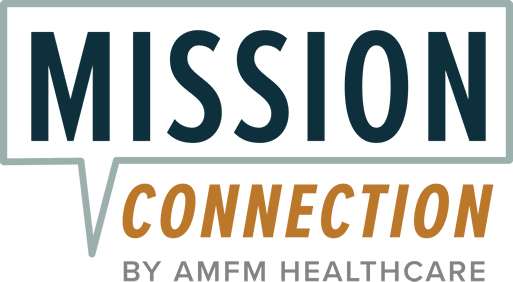Mental Health Breakdown at Work: Recognizing When Job Stress Becomes Dangerous

Many of us have pushed through a tough week or two at work and told ourselves we’re “just tired,” or that things will “settle down soon.”
But long-term job stress is a different animal. It doesn’t just burn you out; it starts to seep into your body, mood, relationships, and the way you function day to day. Further, if left unchecked, it can pull you into a full-blown mental breakdown.
If you’re concerned about a potential mental health breakdown in yourself or someone you care about, professional support can help you get back on track to a healthy, fulfilling life. This page can also help, as it explores…
- The signs that someone may be experiencing a nervous breakdown at work
- The types of professions most associated with emotional collapse
- How work stress affects mental health
- Ways of coping with job-related anxiety and emotional strain
- Therapy options for work-related stress
- What employers can do to prevent mental health breakdowns at work
- Where to find professional support

Signs You May Be Headed Toward a Breakdown Due to Job Stress
Job stress doesn’t announce itself with sirens. It shows up in small, often-overlooked ways that pile up.
That said, everyone responds to stress in their own way, including how it shows up in the body and mind. For instance, some people feel stress mostly in their mood, while others notice it in their sleep, appetite, or physical pain. Therefore, you might not experience every symptom listed below – and this is normal.
However, across many studies and lived experiences, certain physical, emotional, and behavioral signs tend to show up more often when someone is dealing with prolonged work-related stress. We’ve broken these signs into the following separate categories.
Physical Symptoms
Stress floods the nervous system and starts chipping away at your body’s ability to function normally. You may not immediately connect these symptoms to your job, but if they flare up around work or worsen during the week, they should be taken seriously.
Common physical signs of chronic job stress include:1
Difficulty falling or staying asleep- Waking up too early or feeling unrested after a full night’s sleep
- Shoulder, neck, or back pain with no physical cause
- Digestive issues like nausea, bloating, cramps, or changes in appetite
- Frequent tension headaches near the end of the workday
- Heart and breathing changes (such as a racing heartbeat, tight chest, or shortness of breath)
- Catching colds often or struggling to recover from minor illnesses
- Feeling physically exhausted, even after rest
Emotional Symptoms
Emotional cues that may signal that your mental health is reaching a breaking point include:2
Snapping at coworkers or family over small things- Feeling like you’re on edge or mentally “revving” even when nothing urgent is happening
- Regularly feeling like you’re drowning in tasks, with no way to catch up
- Telling yourself you’re not doing enough or that you’re failing when you’re clearly overloaded
- Crying unexpectedly, getting easily frustrated, or shutting down emotionally
- Losing interest in hobbies, relationships, or things you usually enjoy
- Trouble relaxing, even when you’re “off the clock”
Behavioral Symptoms
Your behavior is often the first thing others notice, but the last thing you do. For instance, perhaps when stressed out due to work, you start skipping meals or eating irregularly because you’re too preoccupied to feel hungry. On the other hand, someone might turn to food for comfort and find themselves binge eating, especially at night.
Sleep habits might also become erratic. For example, staying up too late just to reclaim some sense of personal time, even though you know it’ll make the next day harder. This is called “revenge bedtime procrastination,” and it’s common in people who feel they’ve lost control over their time during the day.
Further, at work, behavior may shift in one of two directions. You may start overworking, pushing yourself to get ahead of stress by staying late, working weekends, or checking your email constantly. Or you may begin disengaging by missing deadlines, procrastinating, zoning out in meetings, or making careless mistakes because your brain is too tired to focus.
Outside of work, you could find yourself canceling plans, avoiding friends, or isolating yourself. You may also start relying on caffeine to push through the day or alcohol or sleeping pills to wind down at night.
Eventually, basic self-care can fall apart. This might look like stopping exercise, skipping showers, or letting your space become cluttered and chaotic.3
High-Risk Professions for Emotional Collapse
Research consistently shows that healthcare workers, first responders, social workers, teachers, and those in high-stakes corporate roles face a disproportionate burden when it comes to mental health challenges at work.4
In particular, studies have found that burnout among physicians and nurses is alarmingly common due to contributing factors like:5
Long shifts- Excessive workload
- Administrative burden
- Moral distress
- Lack of autonomy
- Poor work-life balance
- Emotional strain of patient care
- Inadequate support
- Toxic work environments
- Fear of medical errors and litigation
Emergency responders such as police officers, firefighters, and paramedics also face high work-related stress due to the intense, unpredictable nature of their roles. They are regularly exposed to life-threatening situations, traumatic events, and critical decision-making under pressure, which places immense strain on their mental health.
In many cases, responders also carry the emotional weight of the people they are trying to help, while working in environments where mistakes have fatal consequences.
Similarly, educators working in underfunded systems often report intense emotional exhaustion, as they juggle academic responsibilities with unmet student needs and systemic pressures.
Further, In the corporate world, high-level executives and those in client-facing roles regularly face excessive workloads, role ambiguity, and pressure to meet unrealistic targets. All these factors can contribute to emotional breakdowns and chronic stress.
How Work Stress Affects Mental Health
Acute stress refers to a sudden, short-term reaction to an immediate threat or pressure, often tied to specific events. In the workplace, acute stress may be triggered by:
An urgent deadline or performance review- Unexpected changes like layoffs or restructuring
- Public speaking
- Conflict with a colleague
- A high-stakes presentation or client pitch
Acute stress activates the sympathetic nervous system, leading to a spike in cortisol (the stress hormone), increased heart rate, and heightened alertness. Repeated exposure to acute stressors without proper coping mechanisms can raise the risk of anxiety disorders.
In contrast, chronic work stress occurs when pressures are unrelenting, such as excessive workloads, long hours, poor management, job insecurity, or lack of autonomy.
Unlike acute stress, which is situation-specific, chronic stress is more insidious and cumulative. For instance, the landmark Whitehall II Study found that employees in low-control, high-demand jobs were significantly more likely to develop depressive symptoms and cardiovascular issues over time.7
In addition, the World Health Organization (WHO) officially recognized burnout as an occupational phenomenon.8 Burnout is when emotional exhaustion and depersonalization caused by chronic workplace stress has not been successfully managed.
If you’re experiencing a couple of these signs, it may be important to seek professional support. A mental health crisis rarely resolves by itself without help.
Coping With Job-Related Anxiety and Emotional Strain
Many people under chronic work stress begin to normalize their anxiety, irritability, or fatigue, brushing it off as “just a busy season.” However, research says naming emotions can reduce their intensity by activating the prefrontal cortex, helping regulate the brain’s stress response.
In addition, job stress often spills over into personal time. Establishing clear boundaries between work and non-work hours may lead to lower emotional exhaustion and higher well-being. For instance, you could try:
- Turning off work notifications after hours
- Avoiding emails outside designated work times
- Creating a physical space at home reserved only for work if you work remotely
What’s more, passive rest, like scrolling or lying down, isn’t enough to recover from stress. Active recovery requires restorative activities that lower cortisol, such as:
- Physical activity: Exercise can reduce anxiety by regulating your autonomic nervous system
- Brief mindfulness practices: Even ten minutes of mindfulness or meditation a day has been shown to reduce workplace stress and improve emotional regulation
- Creative hobbies: Activities like art, gardening, and volunteering can stimulate the brain’s reward system and offer relief from emotional fatigue
- Using external systems: Managing tasks with to-do lists, calendar blocks, or apps, can help reduce cognitive load and foster a greater sense of control9
Unfortunately, one of the most overlooked coping tools is practicing self-compassion during times of struggle. Many high-achieving professionals respond to stress by pushing themselves harder or internalizing guilt. But research shows that treating yourself with kindness leads to better resilience.
Also, employees who find a sense of purpose in their tasks tend to report lower stress levels. Aim to take a moment each day to reflect on how your work helps others, as this may help shift your mental framework and reduce emotional wear.
Therapy for Work-Related Stress
Cognitive behavioral therapy (CBT) is one of the most widely studied and effective treatments for stress-related disorders, including workplace-induced anxiety. It helps you identify negative thought patterns that contribute to emotional distress and replace them with constructive thinking.10
Mindfulness-based cognitive therapy (MBCT) builds on CBT principles but integrates mindfulness meditation techniques to disengage from negative thoughts. It teaches people to observe their emotions without reacting to them. This can be helpful for employees who tend to ruminate after work hours or anticipate failure even before a task begins.
Then there’s acceptance and commitment therapy (ACT), which focuses on psychological flexibility. This is the ability to accept difficult internal experiences while taking action aligned with personal values. This type of therapy helps people who feel stuck in toxic work environments or trapped by perfectionism. Its components include:
Acceptance: Learning to tolerate distressing thoughts or feelings without avoidance- Cognitive defusion: Detaching from thoughts (such as I’m a failure) by viewing them as mental events, not facts
- Values-based action: Identifying personal values (like creativity or collaboration) and committing to actions that support them11
In cases of work-related trauma (such as exposure to harassment, medical emergencies, or repeated high-stakes decision-making), trauma-focused eye movement desensitization and reprocessing (EMDR) therapy can be useful. This technique uses guided eye movements while recalling distressing memories, helping the brain reprocess the memory and reduce its emotional intensity.
What Employers Can Do to Prevent Mental Health Breakdowns at Work
The following are some steps employers can take to prevent mental health breakdowns in the workplace:
Encourage open communication where employees feel safe discussing stress or mental health challenges without fear of stigma- Regularly evaluate workloads, redistribute tasks where necessary, and ensure that deadlines are reasonable
- Offer regular training on recognizing signs of burnout, anxiety, or depression
- Allow flexible hours or remote work options to improve autonomy
- Provide confidential access to mental health services through employee assistance programs (EAPs) or on-site counseling
- Use anonymous surveys and focus groups to assess stress levels
Mental Health Support for Professionals at Mission Connection
At Mission Connection, we offer mental health support that meets you where you are, emotionally, mentally, and practically.
Our team of licensed professionals uses proven methods like CBT, dialectical behavioral therapy (DBT), mindfulness-based tools, and psycho-educational groups. But more importantly, we build our programs around you and your schedule.
We’ve helped people across the country heal from job-related stress, burnout, depression, anxiety, and other mental health challenges. In fact, 96% of our clients say they’re glad they made the decision to begin care with us.
If you’re feeling the weight of stress at work, call us today or get started online.

References
- Tsai, Y.-C., & Liu, C.-H. (2012). Factors and symptoms associated with work stress and health-promoting lifestyles among hospital staff: a pilot study in Taiwan. BMC Health Services Research, 12(1). https://doi.org/10.1186/1472-6963-12-199
- Maulik, P. K. (2017). Workplace stress: A neglected aspect of mental health wellbeing. The Indian Journal of Medical Research, 146(4), 441–444. https://doi.org/10.4103/ijmr.IJMR_1298_17
- Chen, B., Wang, L., Li, B., & Liu, W. (2022). Work stress, Mental health, and Employee Performance. Frontiers in Psychology, 13. https://doi.org/10.3389/fpsyg.2022.1006580
- Dėdelė, A., Miškinytė, A., Andrušaitytė, S., & Bartkutė, Z. (2019). Perceived Stress among Different Occupational Groups and the Interaction with Sedentary Behaviour. International Journal of Environmental Research and Public Health, 16(23), 4595. https://doi.org/10.3390/ijerph16234595
- Lin, K.-H., Selvanayagam, N., Patnaik, S., & Kuo, C.-Y. (2025). Burnout Among Physicians and Nurses Working in Intensive Care Units and Emergency Departments: A Systematic Review and Meta-Analysis. Journal of Emergency Nursing. https://doi.org/10.1016/j.jen.2025.02.007
- National Institute for Occupational Safety and Health. (2014). Stress at work. Stress at Work, 99-101(99-101). https://doi.org/10.26616/nioshpub99101
- Bosma, H., Marmot, M. G., Hemingway, H., Nicholson, A. C., Brunner, E., & Stansfeld, S. A. (1997). Low job control and risk of coronary heart disease in whitehall ii (prospective cohort) study. BMJ, 314(7080), 558–558. https://doi.org/10.1136/bmj.314.7080.558
- World Health Organization. (2019, May 28). Burn-out an “occupational phenomenon”: International classification of diseases. World Health Organization. https://www.who.int/news/item/28-05-2019-burn-out-an-occupational-phenomenon-international-classification-of-diseases
- Rabenu, E., & Yaniv, E. (2017). Psychological resources and strategies to cope with stress at work. International Journal of Psychological Research, 10(2), 8. https://doi.org/10.21500/20112084.2698
- Dalgaard, V. L., Andersen, L. P. S., Andersen, J. H., Willert, M. V., Carstensen, O., & Glasscock, D. J. (2017). Work-focused cognitive behavioral intervention for psychological complaints in patients on sick leave due to work-related stress: Results from a randomized controlled trial. Journal of Negative Results in BioMedicine, 16(1). https://doi.org/10.1186/s12952-017-0078-z
- Unruh, I., Neubert, M., Wilhelm, M., & Euteneuer, F. (2022). ACT in the workplace: A meta-analytic examination of randomized controlled trials. Journal of Contextual Behavioral Science, 26. https://doi.org/10.1016/j.jcbs.2022.09.003
- World Health Organization. (2016, April 13). Investing in treatment for depression and anxiety leads to fourfold return. Www.who.int. https://www.who.int/news/item/13-04-2016-investing-in-treatment-for-depression-and-anxiety-leads-to-fourfold-return






